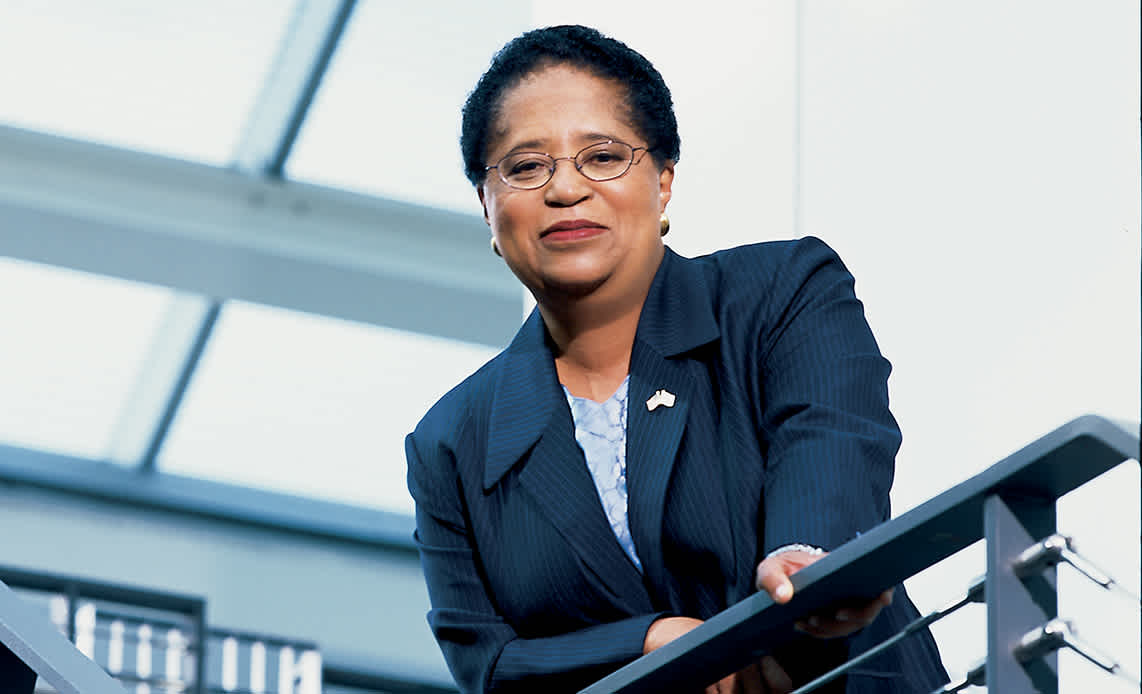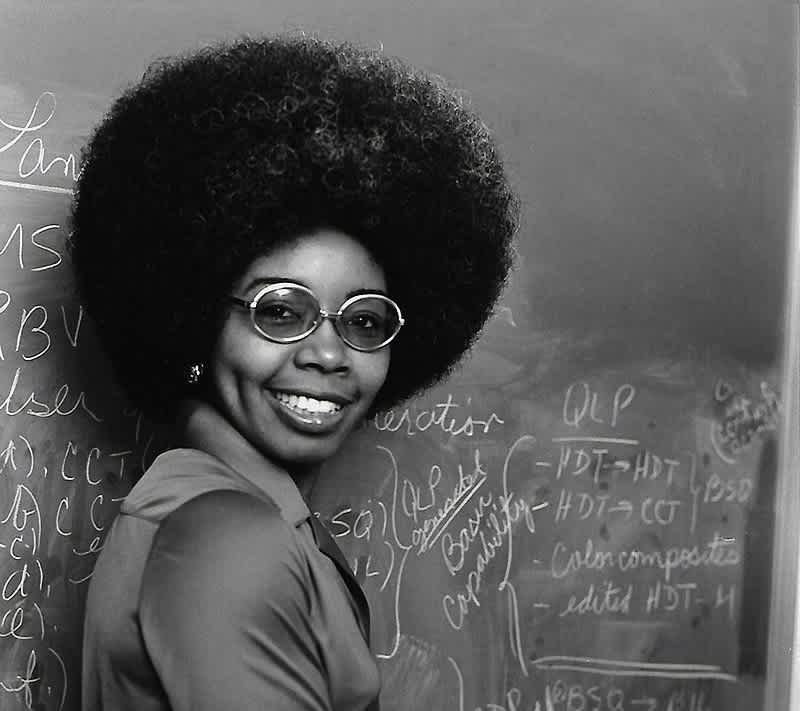Company
Black History Month in tech: 8 visionaries who shaped the future
This year for Black History Month, meet 8 visionary, brilliant, innovative black scientists, engineers, and software developers who are pioneers in technology.
PUBLISHED ON
There are a lot of special dates in February– Valentine’s Day, the Super Bowl, even Groundhog Day… But there’s one that’s marked in big bold letters in Sinch Mailgun’s calendar.
February is Black History Month, a month to honor the legacy of the African American community. This year, we want to recognize eight of the barrier-breaking African Americans who have shaped the modern technology space.
These leaders and tech innovators span generations. You can’t always find them in textbooks or science publications, but each one of them is an inspiring force in the world of tech and someone that has made their mark by forging ahead no matter what came against them.
Table of contents
Table of contents
01Dr. Shirley Ann Jackson: Physicist on the front lines
02Mark E. Dean: Determined to invent, no matter what
03Jesse Russell: Engineering innovative IT solutions
04Lisa Gelobter: Determined to achieve, advance, and deliver
05Roy L. Clay Sr.: The ‘Godfather of Silicon Valley
06Janet Bashen: Breaking hard ground with software
07Valerie Thomas: Inventor and illusion transmitter
08Kimberly Bryant: Delivering opportunity to thousands of girls
Dr. Shirley Ann Jackson: Physicist on the front lines
Dr. Shirley Ann Jackson is the quintessential science buff. She fell in love with science as a child when her parents helped her start doing experiments on bumblebees and wasps in the backyard.

In fact, in an MIT article, she called her parents “aspirational role models,” in part because they were so encouraging in her education, and developed her love of science in and out of school. Her father also served in World War II and earned a Bronze Star.
Dr. Jackson was in school when Brown vs. Board of Education desegregated public schools. This allowed her to attend a school much closer to home, and be put into an advanced track for gifted students. There, she excelled in science and math, and later graduated valedictorian, landing a spot at MIT.
She was one of a very small group of black students in attendance at that time. She describes it as a lonely but exhilarating time because she loved science so much but had a hard time fitting in. She succeeded there because she focused on the work, and on what her achievement would mean for other African Americans who would follow.
After earning her doctorate, she spent years doing theoretical physics research at AT&T Bell Laboratories. Being a theoretical physicist, it’s difficult to describe her work in a way that the other 98% of us can understand. For example, she was named a fellow of the American Physical Society for her research into, as described by the National Women’s Hall of Fame, the “interaction of electrons on liquid helium films with surface excitations as a polaron problem.” Oh yes, that. Of course.
Her work would later lead to huge scientific and technical advancements such as caller ID, call waiting, fiber optic cables, solar cells, the touch-tone telephone, and the portable FAX.
Dr. Jackson’s awards are almost without number. She has worked with two presidents. Served on numerous boards. Taught at Rutgers. And today, she serves as president of Rensselaer Polytechnic Institute, which she has elevated to an elite institution.
In an interview with Charlie Rose, Dr. Jackson talked about the essence of science and how to get kids excited about it: “We need to go back to the discovery, to posing a question, to having a hypothesis and having kids know that they can discover the answers and can peel away a layer.”
Mark E. Dean: Determined to invent, no matter what
Mark E. Dean is credited as being one of the co-inventors of IBM’s personal computer, as well as the color PC monitor and the gigahertz chip. He was inducted into the National Inventors Hall of Fame in 1997 and currently holds more than 40 patents.

He was born in Jefferson City, Tennessee, and though gifted both athletically and academically, he chose to pursue a degree in electrical engineering. This eventually led him to IBM. There, as chief engineer, he would lead the team of 12 that designed the first IBM PC in the 1980s.
No matter who tried to prevent him from excelling and achieving, Dean was relentless, both in his commitment to making his ideas and inventions work, and in persistently finding industry peers who would back him up. As Dean describes it in an Engadget article:
"I ignored the people attempting to block my progress and had no limits to who I talked to and in sharing my opinion. I also was able to demonstrate my ideas to a point where it was hard to argue their viability. It took a lot of work and sacrifice. But I was confident and believed I had some good ideas. Fortunately, there were a few in the right leadership positions that agreed with my ideas."
At the end of the day, Dean knew that company leaders wanted stuff that worked and that delivered on the promise behind the brand. So when asked for advice he would give to young people, especially those facing racial prejudice at work, Dean’s ultimate advice is simple: “Don’t give up.”
He went on to say that, "if someone is blocking your ideas and advancement, find a different way to expose your proposals… There is often someone at the next level or an associate manager that is willing to listen. To break through, you often have to be better than the rest. This takes a lot of work, but it is achievable.”
Jesse Russell: Engineering innovative IT solutions
Born in Nashville, Tennessee, Jesse Russell had ten siblings and grew up in poor neighborhoods. He had a lot going against him, and at first focused on athletics.

But all that changed when he attended a summer educational program at Fisk University. This opened his eyes to what he could achieve if he put his mind to learning science and math.
In 1973, he graduated from Tennessee State University and got hired immediately afterward by AT&T – Bell Laboratories. There, he would go on to do ground-breaking work in a number of areas that would win him the award for Eta Kappa Nu Outstanding Young Electrical Engineer of the Year in 1980.
He now has over 100 patents to his credit. Not bad, right?
His most well-known achievement is the invention of the digital cellular base station, the technology that would make the modern-day cell phone possible. Some of Russell’s other work led to major innovations in wireless communication, end-user devices, and radio access networks.
He was inducted to the National Academy of Engineering in 1995 and is a fellow of the Institute of Electrical and Electronics Engineers.
Lisa Gelobter: Determined to achieve, advance, and deliver
Lisa Gelobter was not motivated by a love of science, or breaking barriers, or anything like that. She just wanted a job that paid well and that she was good at. And she has accomplished that, and then some.

Born to an interracial couple of immigrant parents – one a Holocaust survivor, the other from the Caribbean – she grew up, as stated in Valence, knowing she had to “work harder, longer, better, faster than everybody else. There has never been any expectation that I would get anything, or that I deserved anything, or that there was any justice or fairness in the world.”
In other words, if she wanted it, she knew it was up to her to make it happen.
Motivated and talented, she paid for college herself by working a job while attending Brown University and earning a computer science degree, with an emphasis in artificial intelligence and machine learning.
Later, she would invent the animation software program that is behind GIF images. In addition to that, she led the way on Shockwave, an early internet video technology, and has done user design, product management, and engineering work for Hulu and BET Network.
Gelobter has since become an entrepreneur, launching her own company, teQuitable, after observing there was no effective online platform for addressing complaints of bias, harassment, or discrimination in the workplace.
The website and app enable employees to file complaints and help employers find ways to address them. As Gelobter puts it in The Grio, “We’re giving companies data that they have never had exposure to and we’re giving employees their agency back,” so they can address issues and make improvements to their workplace culture.
After founding her company, Gelobter was hired as the Chief Digital Service Officer for the Department of Education. It was there that she “came to understand that you could harness technology to solve what had been previously thought of as intractable problems.”
Roy L. Clay Sr.: The ‘Godfather of Silicon Valley
It’s a catchy title, but one earned by Roy L. Clay Sr. in part because, back in 1971, he consulted with Kleiner Perkins Caufield & Byers, a venture capital firm. Clay helped them find and make investments in new computer technology companies.

You may have heard of a few of them: Intel. Compaq. Tandem Computers.
Clay’s most well-known accomplishment is playing a key role in the invention of Hewlett Packard’s first computer, known as the 2116A, in 1966. After a productive career at HP, he left to start his own company in 1977, ROD-L Electronics, which produced dielectric withstand testers, a device that protects computers from electrical surges. These became a staple of all modern computers as the PC market took off.
Clay entered the world of computer technology before you could even major in it. The industry didn’t exist yet. He’s one of the reasons it does.
"Born in Missouri, he has some pretty harrowing stories of racism from his youth. In one instance, while doing gardening work for a neighbor, the Ferguson police told him to never come back to town again. But his mother didn’t let that get to him, telling him, “Never let racism be a reason you do not succeed.”
But there were more stories during his childhood and youth that shaped him. After graduating with an engineering degree from St. Louis University, the hiring manager at his first job interview told him that “we have no jobs for professional Negroes.”
Clay has been through this. But today, he’s using his achievements, influence, and reputation to lead the next generation. He looks to hire people based on skills, not degrees. And he is convinced that the key to breaking racial barriers and prejudice is simply to get to know people who are different from you: “What integration has done is caused people to know other people. Once they know each other, prejudices fall away in the light of experience.”
Janet Bashen: Breaking hard ground with software
Raised by a garbage collector and a nurse, Janet Bashen grew up in Huntsville, Alabama, and went to Alabama A&M at first, and then later to the University of Houston, USC, and Harvard.

Bashen’s biggest achievement to date has been to found the company Linkline, which allows people to investigate employee claims of workplace violations of the Equal Employment Opportunity Commission, which is part of the Civil Rights Act passed in 1964.
But she soon realized the biggest problem was that there was no way to quickly and easily store and retrieve information related to cases. Bashen needed a software solution. Working with her cousin, a computer science graduate, they were able to develop the software that would take her company to the next level.
Bashen explains how she got the idea while working for an insurance carrier that investigated EEO claims:
“I came up with the idea in 2001. Not everyone had a cell phone in 2001. I saw that papers in process got lost. There had to be a way to take in complaints – something Web-based and accessible away from the office.”
Working for many months on the code and design, Bashen and her team eventually completed the work and secured a patent for it, and in that moment became the first African American woman to earn a software patent.
Bashen credits her parents for preparing her for success: “My success and failures make me who I am, and who I am is a black woman raised in the south by working-class parents who tried to give me a better life by fostering a fervent commitment to succeed.”
Valerie Thomas: Inventor and illusion transmitter
Born in Baltimore, Maryland in 1943, Valerie Thomas was drawn to the sciences from an early age. From the humble beginnings of racially segregated society with fewer educational outlets, she worked her way to Morgan State College (now Morgan State University in Balitmore) and graduated in 1946 with a physics degree which lead her to a job at NASA.

At NASA, Thomas was a data analyst, and started working on the data from the Orbiting Geophysical Observatory – a chain of 6 unnamed satellites designed to study the earth’s magnetosphere.
In the 1970’s Thomas lead an experiment for NASA that used satellite images to collect information about our natural resources, and developed ways to use the data to monitor crop yields. All of this work with satellite imaging, along with her observations of other light experiments, sparked an interest in 3D illusions, or holograms.
By 1980, Thomas had developed and patented her illusion transmitter. The system used video and a concave mirror to capture a floating image of an object. The image is then transmitted to another camera that projects it onto a second mirror making the transmitted object appear 3D.
Throughout her time at NASA, Thomas continued pursuing her education and received her Master’s of Engineering from George Washington University in 1985. Thomas retired from NASA in 1995, but not before she served as the acting associate chief of the Space Science Data Operations Office.
Still, she wasn’t done. In 2004, Thomas obtained her doctorate in educational leadership from the University of Delaware. As a voice for African American girls, Thomas was an active member of several STEM organizations supporting women in science.
Kimberly Bryant: Delivering opportunity to thousands of girls
Kimberly Bryant spent the first couple decades of her career working for leading biotech and pharmaceutical companies such as Pfizer and Merck, as an Engineering Manager.

But then one day, she put her daughter in a computer science camp, and her daughter didn’t enjoy it because she was one of the only girls there and felt very alone.
Bryant decided to do something to change that. And not just for her daughter, but for tens of thousands of other black girls who otherwise would have a hard time learning the foundations they would need to enter the software industry.
So, in 2011 she founded a nonprofit organization called Black Girls Code, or BGC. She used her own retirement account funds to help launch the program, and has since grown it into an international organization with over a dozen chapters around the US and one in South Africa.
Black Girls Code has taught computer programming to over 20,000 girls, and has over a thousand volunteers. They run hackathons, conduct workshops, and provide other activities to give black girls a solid introduction to the world of coding, in addition to business startup concepts.
Bryant’s vision is for a generation of young women to rewrite their futures:
“One of the biggest lessons that we hope to model for several folks, including some of the young women of color who come to me, is the value of understanding your worth, standing up, and demanding the best for yourself and not taking less.”
Technology opportunities for people of color
At Sinch Mailgun, we believe in actively creating a diverse workforce. We know diversity is a main driver for innovation and that it makes us stronger, more adaptable, and more in touch with our customers’ needs.
So if you want to join our incredible team or know someone that would be a great fit, check out our Jobs page. We’re on a mission to redefine the tech industry and we can’t do it without you.





